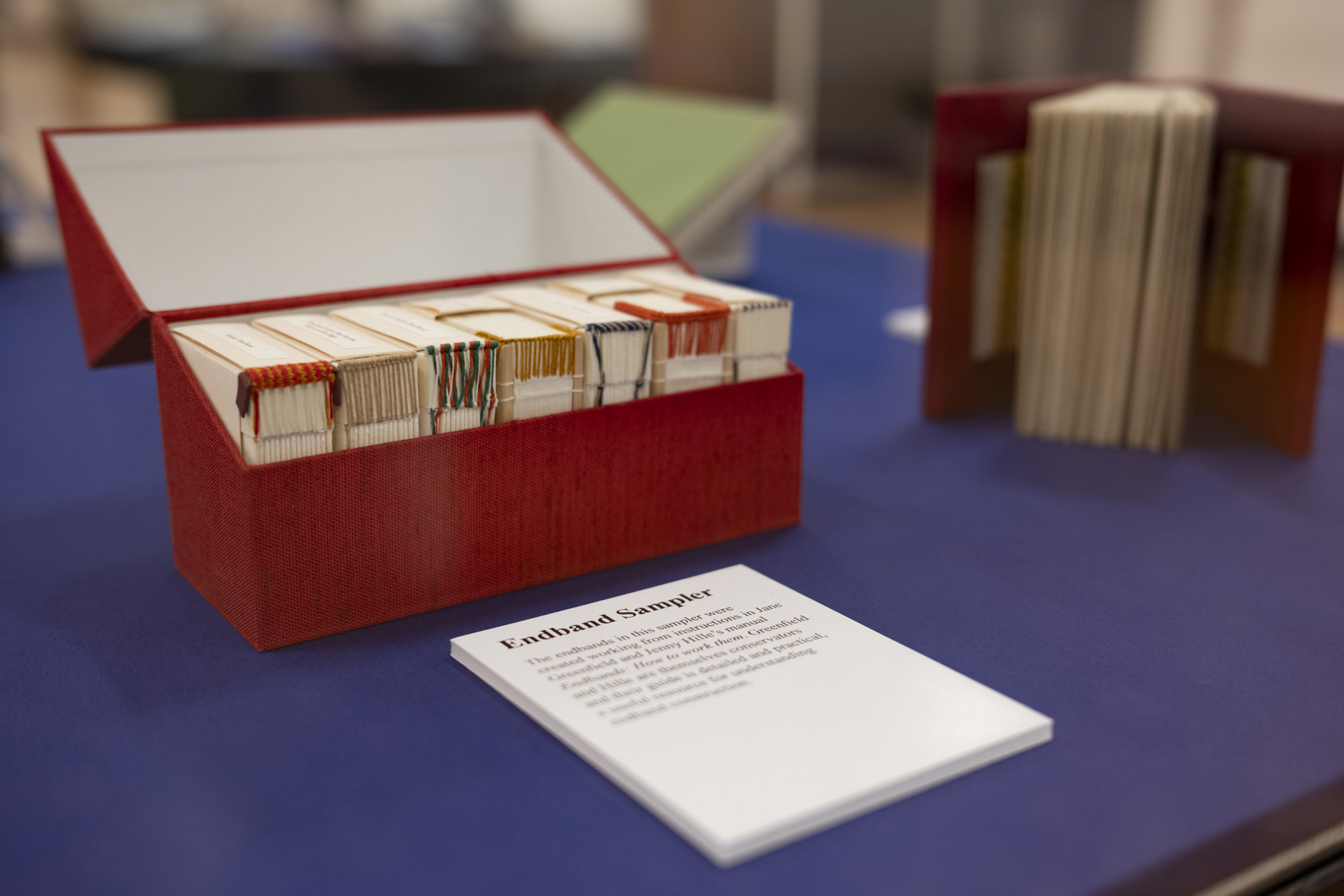“Object Lessons” exhibit in Spencer Research Library showcases bookbinding techniques
Goat skin leather hugs parchment pages, metal clasps snap around a red oak cover, and a form of book binding stretches across a spine like a row of fat caterpillars. Visitors can explore these elements and more at a new exhibit at Kenneth Spencer Research Library examining book construction techniques across time and cultures. The display spans common constructions to unusual elements and features bookbinding models created by KU Libraries conservators over the last 30 years. “Object Lessons: Selections from the Conservation Services Historic Bookbinding Models Collection,” is open to the public through the end of the semester in the library’s Exhibit Space.

Five display cases house bookbinding samples frequently used in conservation lab tours and teaching to demonstrate the structure, materials, and techniques of various historical book forms. The display includes historical elements such as a “girdle book” with an extended cover of soft leather meant to be tucked under a belt, a design from the Middle Ages. The exhibit also features artistic constructions such as accordion or tunnel books that push the boundaries of the form.
“These models offer us a chance to understand the book from the inside out, its anatomy and the mechanical aspects of it,” said Angela Andres, Special Collections Conservator and co-curator of the exhibit with Head of Conservation Services Whitney Baker.
Baker and Andres said the models serve an important purpose for the conservation department, allowing the conservators to hone their hand skills and experience structures they might not have encountered before, all in service of the department’s ultimate purpose, to care for and repair the wide variety of materials in KU Libraries’ collections. The department helps care for, preserve, and repair items that are centuries old, as well as modern books that become damaged or worn.
“In the conservation lab we’re trying to stabilize the materials so they can be used,” Baker said. “The whole goal is to allow an item to continue to exist for as long as possible.”
In addition to aiding the conservation lab with their work, the bookbinding models are also a popular learning tool for education and outreach efforts.
“We bring these models out all the time for class visits and tours of our lab,” Baker said, noting that the lab had welcomed 290 visitors last year. “This exhibit is a chance to share them with more visitors and the general public.”
“The structure, materials, and form of a book provide clues about its history and the culture in which it was created,” Andres and Baker wrote in the exhibit description materials. “The study of historic bindings connects us to traditions of craft, commerce, and readership; it invites us to wonder not only at our differences to the users of such objects, but, importantly, to our similarities.”
Located on the third floor of Kenneth Spencer Research Library, the Exhibit Space features changing exhibitions that highlight library collections. It is open to visitors whenever the building is open.
Recent exhibitions include “To the Great Variety of Readers: Celebrating the 400th Anniversary of Shakespeare’s First Folio” during fall 2023, the first in a new series of exhibitions co-curated by KU faculty and Spencer librarians funded by a major gift from David Bergeron and Geraldo Sousa. Last spring, a traveling exhibit from the Leavenworth County Historical Society called “Photographic Treasures of Historic Leavenworth, Kansas” featured a collection of large images with supplemental materials from Spencer Research Library.
A listing of current building hours, along with information on location, parking and accessibility is available on Spencer Research Libraries’ website.